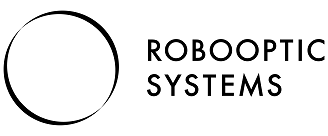| |
Machine vision
Our domain is the integration of sophisticated image-processing systems into the manufacturing, measuring and testing processes of production facilities. Traditional processes such as unwinding, cleaning and more complex processes such as adhesive application, component positioning, laser cutting and automated quality control are solved in our systems using vision. With a large number of installed machine vision systems in industries ranging from medical to lighting technology, we have a deep understanding of machine vision systems and applications. For more than twenty years, our experienced team of key innovators has been working on optical applications and is dedicated to the continuous development and improvement of our proprietary image-processing systems.
Case Study - Machine Vision - Automotive
About machine vision in general
The industry uses machine vision to enhance industrial processes, to identify areas in need of improvement and to develop intelligent motion sequences in the area of robotics. Machine vision is an image-processing technology that enables automated scanning of objects within a given field of view. Cameras or cells are installed in production lines to control processes in real time, to inspect and sort products and to guide robots. The technology allows robots to move freely and interpret their visual environment, enabling them to make decisions that were not directly programmed. Drawing conclusions through machine vision Although a camera does not see like a human eye, machine vision systems use pattern recognition software to analyse data and draw conclusions based on prior knowledge. The machine vision method is particularly useful for quality inspections of raw materials and end products. For example, if a problem is detected, a part can be redirected or the process corrected to solve the problem. In addition to troubleshooting, machine vision combined with identification tags also ensure traceability. A camera can read the tags and use the information to redirect the product or register where the parts are in the supply chain. Intelligent cameras and sensors can digitise and transmit information, decode what has been recorded and eliminate the need for human evaluation. Next, the machine can decide whether the information must be transmitted to the central control system. More intelligent production systems through machine vision Machine vision plays a central role in the concept of the intelligent manufacturing system, which is based on an automated system consisting of a communicating network and an intelligent exchange of information. Image-processing systems with industrial cameras, which virtually represent the eyes of the manufacturing system, can process information that previously had to be entered manually as part of testing procedures. This reduces human error and enables robots to react flexibly to production control data. Since image-processing devices capture, collect and exchange data, they are important technical devices for networked production processes. This data can enrich the value chain, but can also be used to trigger intelligent actions. In addition, machines can be examined for signs of wear using this technology. The data is used for maintenance purposes and can alert plant managers to order a spare part before breakdowns occur. |
 GAW Site Name
your partner in excellence
GAW Site Name
your partner in excellence
WHERE VISION
MEETS PRECISION